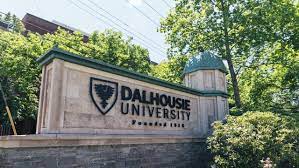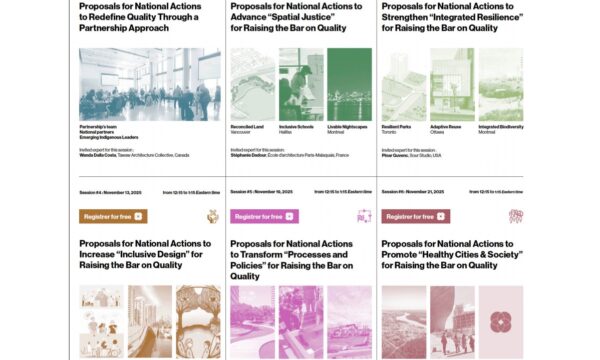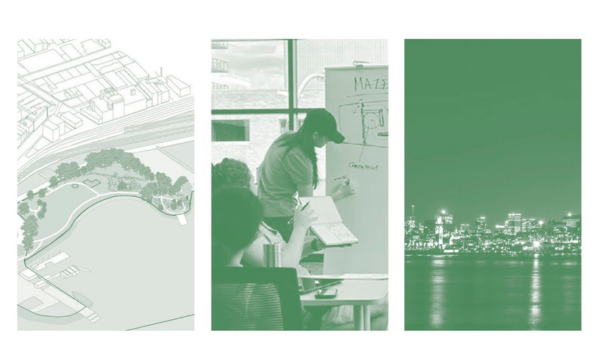This summary focuses on one of the four sessions from the conference on roadmaps to quality. It highlights the presentations and discussions from Calgary, Concordia University, and Laurentian University, showcasing their unique approaches to addressing urban health, ecological sustainability, and watershed management.
The session emphasizes collaboration among municipal authorities, academic institutions, and community stakeholders to tackle challenges like climate change, biodiversity loss, and community well-being. It also explores interdisciplinary strategies, lived experiences, and practical applications for enhancing urban design and sustainability.
*Please note that the following summary was created with the help of an AI tool (fireflies.ai).
Overview
Conference Overview: Jean-Pierre introduces conference topics on roadmaps for quality, emphasizing citizen and authority partnerships; presentations to be uploaded online.
Calgary Roadmap: Calgary focuses on healthy cities, involving municipal and academic partners. Research seeks interdisciplinary approaches to urban health challenges.
Concordia Roadmap: Concordia addresses climate, biodiversity, and wellbeing. It emphasizes tools for practitioners and enhancing quality of life for seniors.
Laurentian Roadmap: Laurentian highlights watershed management in Northern Ontario, focusing on sustainable practices, urban design, and cultural identity in procurement.
🌍 Introduction and Overview (00:01 – 07:59) (00:01 – 07:59)
Jean-Pierre Chupin introduces the four-day conference on roadmaps to quality
- The conference aims to enhance understanding and engagement with quality roadmaps through case studies and collaborative discussions.
- Key takeaways will be shared from national partners at the end of the conference, emphasizing the importance of diverse stakeholder involvement.
Presentations will be uploaded to the Living Atlas on quality
- Presentations from the conference will be accessible on the Living Atlas platform.
- The Living Atlas serves as a repository for resources related to quality in the built environment.
- Updates to the roadmaps and presentations will be made available next week.
Process involves partnership tables with citizens, municipal authorities, and professionals
- Partnership tables facilitate collaboration among diverse stakeholders, ensuring that multiple perspectives are considered in decision-making processes.
- They promote transparency and inclusivity, allowing citizens to actively participate in discussions that affect their communities.
- The involvement of municipal authorities and professionals enhances the quality of outcomes by integrating expert knowledge with community needs and values.
Midterm review of the project, with actions and implementations being defined
- Midterm review of the project focuses on assessing progress and refining strategies for future actions.
- Key actions and implementations are being defined to enhance stakeholder engagement and address identified challenges.
- The project aims to create a roadmap for quality that integrates community input and promotes sustainable practices.
Three sites presenting today: Calgary, Concordia, and Laurentian University
🏙️ Calgary Site Presentation (08:02 – 24:34) (08:02 – 24:34)
Dr. Brian Sinclair and Nooshin Esmaeili present Calgary’s roadmap
- Calgary’s roadmap focuses on integrating health and well-being into urban design.
- The project emphasizes collaboration among diverse stakeholders, including citizens, professionals, and students.
- Key actions include enhancing public spaces, improving transit safety, and promoting inclusive design principles.
Focus on healthy cities and integrated biodiversity
- Healthy cities prioritize the well-being of their residents by integrating green spaces, promoting active transportation, and ensuring access to nature, which contributes to improved physical and mental health.
- Integrated biodiversity involves creating urban environments that support diverse plant and animal species, enhancing ecosystem services such as air and water purification, climate regulation, and recreational opportunities for communities.
- Collaboration among urban planners, ecologists, and local communities is essential to develop strategies that balance urban development with ecological preservation, ensuring sustainable and resilient cities for future generations.
Research questions address redesigning design for better health in cities
- Research questions focus on how design can enhance public health outcomes in urban environments.
- They explore the integration of diverse perspectives, including environmental, social, and health factors, to create holistic design solutions.
- The aim is to identify actionable strategies that promote healthier living conditions and improve overall community well-being.
Various partners involved, including municipal and educational institutions
- Various partners involved include municipal authorities, educational institutions, and professional organizations.
- Collaboration focuses on enhancing quality in the built environment through shared knowledge and resources.
- Engagement with community stakeholders ensures diverse perspectives are integrated into the planning and implementation processes.
Projects range from micro to macro scale, including LRT stations and public events
- Projects focus on improving the quality and accessibility of public transportation systems, such as LRT stations, to enhance user experience and safety.
- Public events are organized to engage the community and gather feedback on urban design and planning initiatives, fostering a sense of inclusivity.
- Case studies are conducted to analyze the impact of various design interventions on local environments and communities, informing future projects and policies.
Emphasis on lived experiences and interdisciplinary approaches
- Emphasis on lived experiences is crucial for understanding the real impacts of design and policy on communities, particularly marginalized groups.
- Interdisciplinary approaches foster collaboration among diverse fields, allowing for more holistic solutions that address complex societal challenges.
- Engaging with community members through participatory methods ensures that their voices and needs are integrated into the planning and design processes.
🌿 Concordia University Presentation (37:22 – 52:35) (37:22 – 52:35)
Carly Ziter presents Concordia’s roadmap focusing on ecological and human-centered approaches
- Carly Ziter emphasizes the integration of ecological and human-centered approaches to enhance health and quality of life for aging populations.
- The roadmap includes interdisciplinary education that incorporates biodiversity content into architecture and urban planning training.
- Community engagement is prioritized through hands-on workshops and intergenerational activities to foster connections between diverse groups and promote inclusive design.
Aim to improve quality of life for aging populations through interdisciplinary cooperation
- Focus on creating inclusive environments that address the unique needs of aging populations, ensuring accessibility and safety in public spaces.
- Encourage collaboration among various disciplines, including architecture, urban planning, health sciences, and social work, to develop holistic solutions that enhance the quality of life for seniors.
- Implement community engagement strategies that involve older adults in the design and planning processes, allowing their lived experiences to inform decisions and foster a sense of belonging.
Research addresses the triple challenge: climate change, biodiversity loss, and well-being
- Research focuses on integrated solutions that simultaneously address climate change, biodiversity loss, and well-being to create sustainable urban environments.
- Interdisciplinary collaboration among scientists, urban planners, and community stakeholders is essential to develop effective strategies that benefit both people and ecosystems.
- Community engagement and lived experiences are critical in shaping policies and practices that enhance quality of life while promoting environmental stewardship.
Focus on creating tools and methodologies for practitioners
- Developing interactive tools that allow practitioners to assess and prioritize community needs based on accessibility, biodiversity, and climate resilience.
- Creating shared databases of best practices and case studies to facilitate knowledge exchange among professionals in architecture, urban planning, and environmental science.
- Implementing interdisciplinary training programs that integrate ecological principles into design education, fostering collaboration between students from diverse fields.
Emphasis on lived experiences and local context in urban planning
- Emphasizing lived experiences in urban planning ensures that the needs and preferences of residents are prioritized, leading to more inclusive and functional spaces.
- Local context plays a crucial role in shaping urban policies and designs, as it reflects the unique cultural, social, and environmental characteristics of a community.
- Engaging with residents through participatory processes fosters a sense of ownership and accountability, ultimately enhancing the sustainability and resilience of urban developments.
💧 Laurentian University Presentation (01:03:53 – 01:17:46) (01:03:53 – 01:17:46)
Terrance Galvin presents Laurentian’s roadmap centered on watershed management
- Terrance Galvin emphasizes the importance of watershed management in promoting social prosperity and environmental health.
- The roadmap aims to integrate various community and ecological perspectives to enhance water quality and accessibility in the Greater Sudbury region.
- Collaboration with local Indigenous communities and organizations is crucial for developing responsive municipal policies and sustainable procurement practices.
Focus on social prosperity and material culture in Northern Ontario
- Social prosperity in Northern Ontario is closely linked to the health of local watersheds, emphasizing the need for sustainable management practices that ensure access to clean water and promote community well-being.
- Material culture in the region focuses on utilizing local resources, such as timber and indigenous materials, to create environmentally friendly and culturally relevant designs that reflect the community’s identity.
- Collaborative efforts among local communities, indigenous groups, and academic institutions are essential for fostering inclusive dialogue and developing responsive municipal policies that address both social and environmental challenges.
Emphasis on studying quality of watersheds across different scales
- Studying quality of watersheds across different scales is crucial for understanding environmental health and sustainability.
- It enables the identification of pollution sources and their impacts on local ecosystems and communities.
- Integrating data from various scales helps in developing effective management strategies and policies for watershed protection and restoration.
- Collaboration among stakeholders, including local communities and scientists, enhances the effectiveness of watershed management efforts.
- Studying quality of watersheds across different scales is crucial for effective environmental management and sustainability.
- It allows for the identification of localized issues that may impact water quality, such as pollution sources and land use practices.
- Understanding watershed dynamics at various scales helps in developing targeted interventions that can enhance ecosystem health and community resilience.
- Integrating data from different scales fosters collaboration among stakeholders, leading to more informed decision-making and policy development.
Integration of various aspects including regreening, urban design, and cultural identity
- Integration of regreening, urban design, and cultural identity fosters sustainable communities by enhancing environmental health and social well-being.
- This approach encourages collaboration among diverse stakeholders, including local communities, indigenous groups, and urban planners, to create inclusive spaces that reflect cultural heritage.
- By prioritizing green infrastructure and biodiversity, cities can improve resilience to climate change while promoting accessibility and quality of life for all residents.
Goal to develop sustainable procurement processes and responsive municipal policies
- Developing sustainable procurement processes involves integrating environmental and social criteria into purchasing decisions to promote eco-friendly products and services.
- Responsive municipal policies aim to adapt to community needs and feedback, ensuring that local governance is flexible and inclusive in addressing diverse stakeholder concerns.
- Collaboration with local communities and stakeholders is essential to create effective policies that reflect the values and priorities of residents, fostering a sense of ownership and accountability.
💬 Discussion and Q&A (01:17:46 – 01:29:00) (01:17:46 – 01:29:00)
Participants discuss the presentations and ask questions
- Participants engaged in discussions about the presentations, focusing on the integration of various disciplines in addressing urban challenges.
- Questions were raised regarding the practical outcomes and impact of the projects on local communities.
- The importance of accessibility and inclusivity in urban design was emphasized, particularly in relation to environmental sustainability.
Topics include implementation of ideas, inclusivity in design, and integration of different scales
- Implementation of ideas requires collaboration among diverse stakeholders to ensure that all perspectives are considered and integrated into the design process.
- Inclusivity in design emphasizes the importance of universal accessibility, ensuring that spaces cater to the needs of all individuals, particularly marginalized groups such as seniors and persons with disabilities.
- Integration of different scales involves connecting local design decisions with broader environmental and social contexts, such as watershed management, to create sustainable and resilient communities.
Emphasis on the importance of universal design and accessibility
- Universal design ensures that environments, products, and services are usable by all people, regardless of their age, ability, or status, promoting inclusivity.
- Accessibility is crucial for enabling individuals with disabilities to participate fully in society, enhancing their quality of life and independence.
- Implementing universal design principles can lead to broader benefits, such as improved usability for everyone, increased safety, and enhanced overall satisfaction in public spaces.
Discussion on connecting watershed management to urban planning and design
- Integrating watershed management into urban planning can enhance water quality and reduce flooding risks by ensuring that natural water systems are preserved and restored.
- Collaboration between urban planners, ecologists, and community stakeholders is essential to create sustainable designs that consider both human needs and environmental health.
- Implementing green infrastructure, such as permeable surfaces and green roofs, can improve stormwater management while providing recreational spaces and enhancing biodiversity in urban areas.



